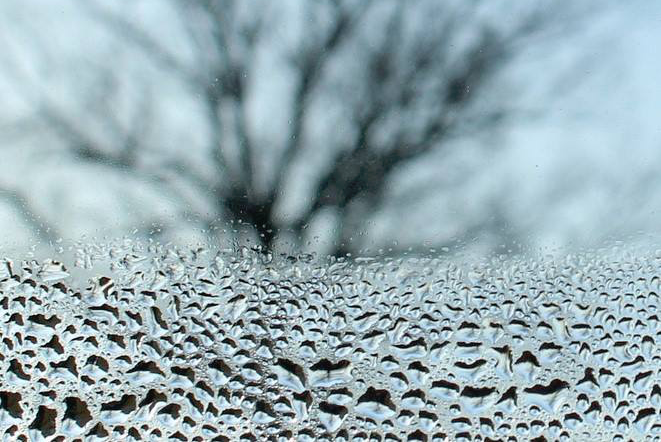3 Reasons Why Your Windows are Foggy (And What You Can Do About It)
Windows Keep Fogging Up? Here’s Why:
In this blog post, we’ll go over the three main reasons your home’s windows appear foggy, and outline several ways you can fix foggy windows.
What Are Foggy Windows?
Foggy windows are windows that appear to be wet due to water droplets that have built up on or inside the window. Sometimes the moisture present can be so prevalent that it looks like a fog has formed and you can no longer see through your windows. The culprit? Condensation that occurs when humid air meets a cool surface, or when there is a large temperature differential between the indoors and the outdoors. During this time, water in the air (humidity) starts to collect on cooler surfaces.
What Causes Foggy Windows?
There are 3 main ways condensation makes your windows appear foggy:
- Condensation on the exterior of the window. This is simply a product of the morning dew or when the A/C is running high and the temperature inside is much lower than the temperature outside. Exterior condensation can occur on both single-pane and double-pane units.
- Condensation on the interior of the window. This is simply the humidity of your home (moisture from cooking, showering, and occupants breathing) being drawn to your windows. Interior condensation can occur on both single-pane and double-pane units.
- Condensation trapped in between your windowpanes. This happens with aging double-pane units and is usually the result of a broken seal. In this case, condensation from the early morning dew and your home’s humidity is seeping in and getting trapped inside your once-sealed double-pane windows.
What Can You Do About Foggy Windows?
Exterior Condensation
Foggy windows that are the result of condensation from the outdoors will clear up on their own, after the morning chill is gone. There is no real action to take here, aside from waiting things out.
If you’re serious about getting rid of the exterior condensation affecting your view of the morning sunrise, consider a product such as RainX.
Interior Condensation
Foggy windows that are the result of condensation from the moisture inside your home can be resolved by taking a few simple steps. Start by ensuring your windows are clean, and that what you suspect is condensation is actually condensation – and not dirt, kitchen grease buildup, or other grime creating the illusion of foggy windows.
If cleaning doesn’t help and you still get foggy windows as the day progresses, try the following remedies:
- Run your kitchen and bathroom fans to expel moisture from your house.
- Circulate the air with a general ceiling fan or oscillating fan.
- Reduce your use of diffusers and humidifiers.
- Open your windows to let out moisture.
- Turn your heat up.
- Check the condition of the weather stripping around your windows.
- Use moisture eliminators (desiccants) in strategic areas.
- Unblock your home’s fresh air intake if you have one.
- Move houseplants away from windows.
- Invest in a dehumidifier or air-to-air exchanger.
If windows are still foggy after all that effort, it might be that your foggy windows are due to condensation trapped inside your window’s sealed unit.
If this is the case, it’s best to treat the problem sooner rather than later. This is because foggy windows are more than just unattractive and inconvenient – they also can lead to water damage, mold and mildew growth, and floor stains.
Condensation Trapped Between Windowpanes
If you suspect your windows are foggy due to condensation in between your windowpanes, it’s highly likely that the window’s seal framing the edges of the glass is broken and has allowed moisture to seep in and get trapped.
A double-pane window contains insulating airspace sandwiched and sealed in between two glass panels. This airspace is extremely effective at maintaining a consistent temperature and reducing heat loss, especially when paired with a desiccant at the bottom of the window, and/or argon gas.
Most modern double-pane windows have an inner seal for protecting against moisture, and an outer seal for increasing the strength of the window. Once both seals weaken and crack open, condensation begins to seep into the airspace, creating the foggy, wet appearance you can’t just wipe away. At this point, a repair or replacement of your window’s sealed unit is required to fix the problem.
The seals of double-pane windows are not impervious to the elements, and eventually weaken due to age (think decades of exposure to sunlight, wind, and rainfall – over time, the window’s sealant hardens and starts to crack.) Seals can also break when there is water retention in the frame (improper drainage around the window).
Double-pane window seals last about 15-20 years. After this time, if a broken window seal is the only issue affecting the quality of your windows, only the window’s sealed unit requires replacing. This means you can leave the window frame in-tact and only replace the glass – it’s a faster, more convenient, and more affordable solution than replacing the entire unit.
Remember that repairing or replacing aging windows comes with many benefits in addition to eliminating your foggy panes! For instance, they can go a long way in increasing your home’s energy efficiency, thereby reducing your heating and cooling costs. Completely new windows can also improve the curb appeal of your home, as well as make it more secure.
Need help fixing your foggy windows? Call Budget Glass in Nanaimo at (250) 758-3374 for a free quote on sealed unit replacements, or schedule an appointment online.

